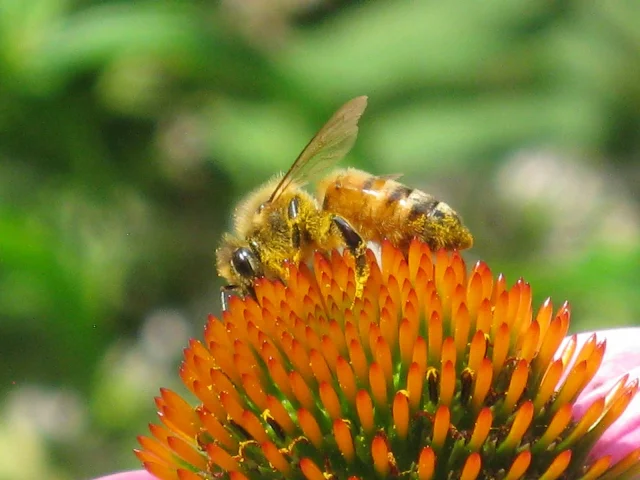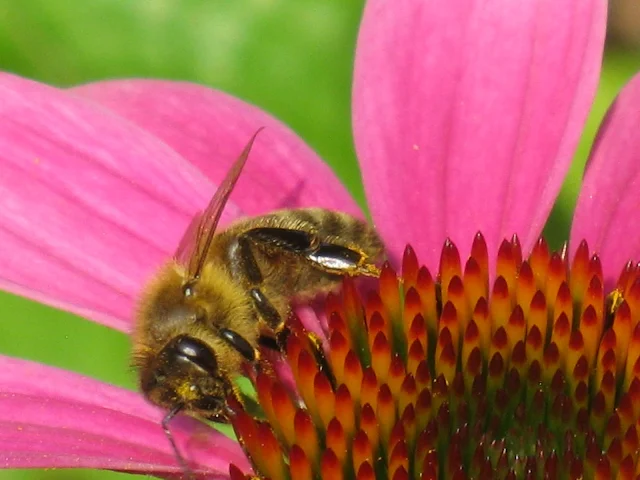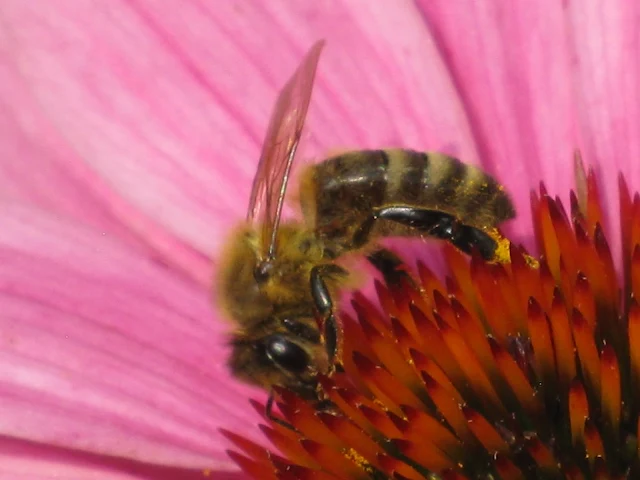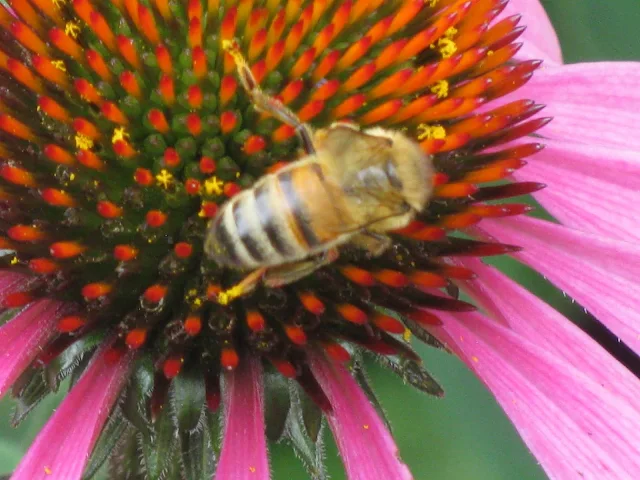 |
Here are two flower pots that had hyacinthes in them when they were given to us years ago. I found the metal tray in someone's garbage and the pots fit in it very nicely. |
The cottage garden, the country garden, Percy Grainger's "In an English Country Garden", just writing the title of this piece of music causes me to hear it in my mind and to sing it to myself.
Most Canadians, most Canadians who garden, plant annuals, these flowers are ready to be planted and produce flowers almost immediately, they also flower most of the season. Personally, I have switched over to an all-perennial garden. It feels more substantial and represents how I feel about gardening, frugality, sustainability, and life in general.
Planting day in Canada is Victoria Day, that is May 24, and where else in the Commonwealth is Victoria Day celebrated but in Canada? Victoria Day is also when the last frost is supposed to have passed and we can plant our annuals without worrying about a sudden cold spell. Victoria Day, named after Queen Victoria, used to also be fire cracker day. When I was young we used to ride our bikes to nearby Ville St. Pierre and buy firecrackers there. It was lots of fun setting off firecrackers with a piece of white string that was lit on fire, then with a smouldering glow on the end of the string we could light fire crackers, throw them, and watch them explode.
Back in the 1950s our upstairs neighbours on Oxford Avenue were Mr. and Mrs. Nuttall; he was an avid gardener who claimed the garden even though it was supposed to be looked after by people in the first floor flat. I remember someone putting fire crackers in his tulips and blowing up the flowers. It wasn't me, really, I would never have done that.
When you set out to plant a cottage garden you will probably say goodbye to annuals; for the most part annuals and a cottage garden are mutually exclusive but there are, of course, exceptions. You will save a bundle by planting perennials and have, in my opinion, a much nicer garden. Begin with cone flowers, move on to other daisies, and then aim to plant all of the other flowers that go into a cottage garden. I will make a list of these flowers but you've probably heard of all of them and you will see how simple it is. This will cost a few hundred dollars the first year but amortized over several years it is not costly and the enjoyment far exceeds the cost. As well, these plants multiply and soon, as I did last fall and this spring, you will be transplanting cone flowers, daisies, and bee balm to other parts of your garden. The cost is free; the return is immense.
A true cottage garden doesn't have a lawn and that is what I am working towards, when that happens there will be foot paths and much more garden and much less grass. Grass is not a flower although people love their lawns. I, too, like a nice lawn but I like a cottage garden even more.
Last fall I dug up some grass and moved daisies to the new flower beds. I moved cone flowers, daisies, bee balm, ornamental grass, and holly hocks to the new flower beds; the result has been better than I ever expected. I have a lot of shade in this garden, too much shade, and the new garden plot is in the full sunlit part of the garden. I would like to have a huge bank of daisies as I've seen in other cottage gardens but without a lot of sunlight this seemed a difficult feat to achieve, now it's possible that in a year of two, enlarging the new flower beds, I will have quite a terrific display of daisies, bee balm, cone flowers, and others.





















































